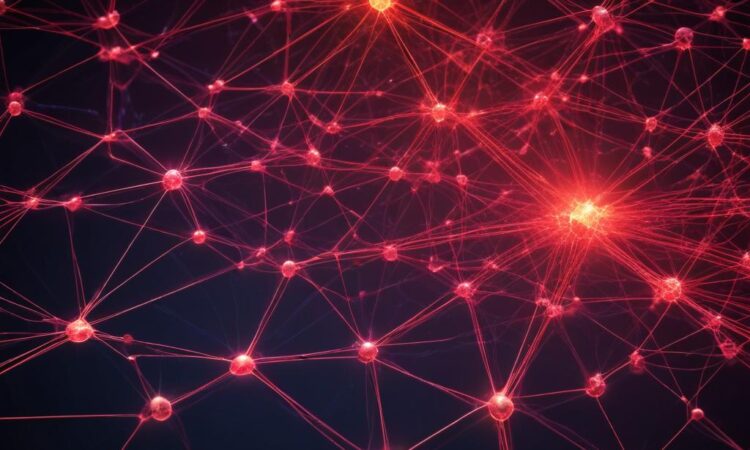Rise of AI-Powered Cybersecurity Tools
Several major cybersecurity firms unveiled new AI-powered threat detection and response systems. This reflects the growing reliance on artificial intelligence to combat increasingly sophisticated cyberattacks. The global impact is seen in heightened security measures across various sectors.
The cybersecurity landscape is evolving at an unprecedented pace. Cybercriminals are constantly developing new and more sophisticated attack vectors, utilizing advanced techniques to bypass traditional security measures. This arms race necessitates a proactive and adaptive approach to defense, and artificial intelligence is rapidly becoming the key to staying ahead of the curve.
AI-powered tools offer several significant advantages over traditional methods. Their ability to analyze vast amounts of data in real-time allows for faster identification of threats, reducing the window of vulnerability. These systems can detect anomalies and patterns that might be missed by human analysts, leading to earlier detection of intrusions and potential breaches.
Machine learning algorithms are central to these new systems. They learn from past attacks, adapting and improving their ability to recognize and respond to new threats. This continuous learning process ensures that the security systems remain effective against evolving attack methods. The more data these systems process, the more accurate and effective they become.
One key area where AI is making a significant impact is in threat detection. Traditional signature-based detection systems rely on identifying known threats, leaving them vulnerable to zero-day exploits and novel attack techniques. AI-powered systems, however, can identify malicious activity based on behavioral patterns, even if the specific attack method is unknown.
This shift towards behavioral analysis allows for more proactive threat detection. The systems can monitor network traffic, user activity, and system logs for suspicious patterns, flagging potential threats before they can cause significant damage. This proactive approach is crucial in mitigating the impact of advanced persistent threats (APTs), which can remain undetected for extended periods.
Beyond detection, AI is also revolutionizing threat response. Automated response systems can quickly contain and neutralize threats, minimizing the impact of attacks. This automated response is critical in reducing the time it takes to address security incidents, limiting the potential damage and the costs associated with recovery.
The use of AI in cybersecurity is not without its challenges. The accuracy and reliability of AI systems depend heavily on the quality and quantity of the data they are trained on. Biased or incomplete data can lead to inaccurate predictions and false positives, hindering the effectiveness of the system.
Furthermore, the complexity of AI-powered systems can make them difficult to manage and maintain. Specialized expertise is required to implement, configure, and monitor these systems, posing a significant hurdle for smaller organizations with limited resources.
Despite these challenges, the benefits of AI in cybersecurity are undeniable. The ability to analyze vast amounts of data, detect anomalies, and respond quickly to threats is crucial in today’s complex digital landscape. The increasing sophistication of cyberattacks necessitates the adoption of advanced security measures, and AI is proving to be a powerful tool in this ongoing battle.
The global impact of this technological shift is significant. Organizations across various sectors, from finance and healthcare to government and critical infrastructure, are increasingly adopting AI-powered cybersecurity solutions. This widespread adoption reflects a growing recognition of the importance of proactive and adaptive security measures in protecting against the ever-evolving threat landscape.
The development and deployment of AI-powered cybersecurity tools are not merely a technological advancement; they represent a fundamental shift in how we approach cybersecurity. The focus is shifting from reactive defense to proactive threat hunting and prevention. This paradigm shift requires a collaborative effort between cybersecurity professionals, technology developers, and policymakers to ensure the responsible and effective implementation of AI in securing our digital world.
The future of cybersecurity is inextricably linked to the advancement of AI. As cyberattacks become more sophisticated, the need for more intelligent and adaptive defense mechanisms will only grow. The continued development and refinement of AI-powered tools will be crucial in maintaining the security and integrity of our digital infrastructure and protecting against the ever-present threat of cybercrime.
The integration of AI into cybersecurity is a multifaceted and constantly evolving field. Ongoing research and development efforts are focused on improving the accuracy, efficiency, and adaptability of AI-powered systems. The exploration of new techniques and algorithms, combined with the increasing availability of data, will continue to drive innovation in this critical area.
The ethical considerations surrounding the use of AI in cybersecurity are also becoming increasingly important. Concerns about bias, transparency, and accountability need to be addressed to ensure the responsible use of these powerful technologies. Striking a balance between effective security and ethical considerations is essential for building a secure and trustworthy digital future.
In conclusion, the rise of AI-powered cybersecurity tools marks a significant turning point in the fight against cybercrime. These tools offer a powerful arsenal of capabilities, enabling organizations to proactively defend against increasingly sophisticated attacks. While challenges remain, the benefits of AI in enhancing cybersecurity are clear, and its adoption is set to continue growing in the years to come.
The ongoing development and refinement of AI in cybersecurity will undoubtedly shape the future of digital security. As threats evolve, so too will the technologies used to combat them. The collaboration between researchers, developers, and security professionals will be critical in ensuring that AI is utilized responsibly and effectively to protect against the ever-present risks in the digital realm. The journey toward a more secure digital future is a continuous process, and the adoption of AI-powered tools represents a crucial step forward.
This continuous evolution of AI in cybersecurity necessitates a commitment to ongoing learning and adaptation. Security professionals must stay abreast of the latest advancements in AI and its application to cybersecurity. This ongoing education is crucial in ensuring that organizations can effectively leverage these powerful tools and remain protected against evolving threats.

